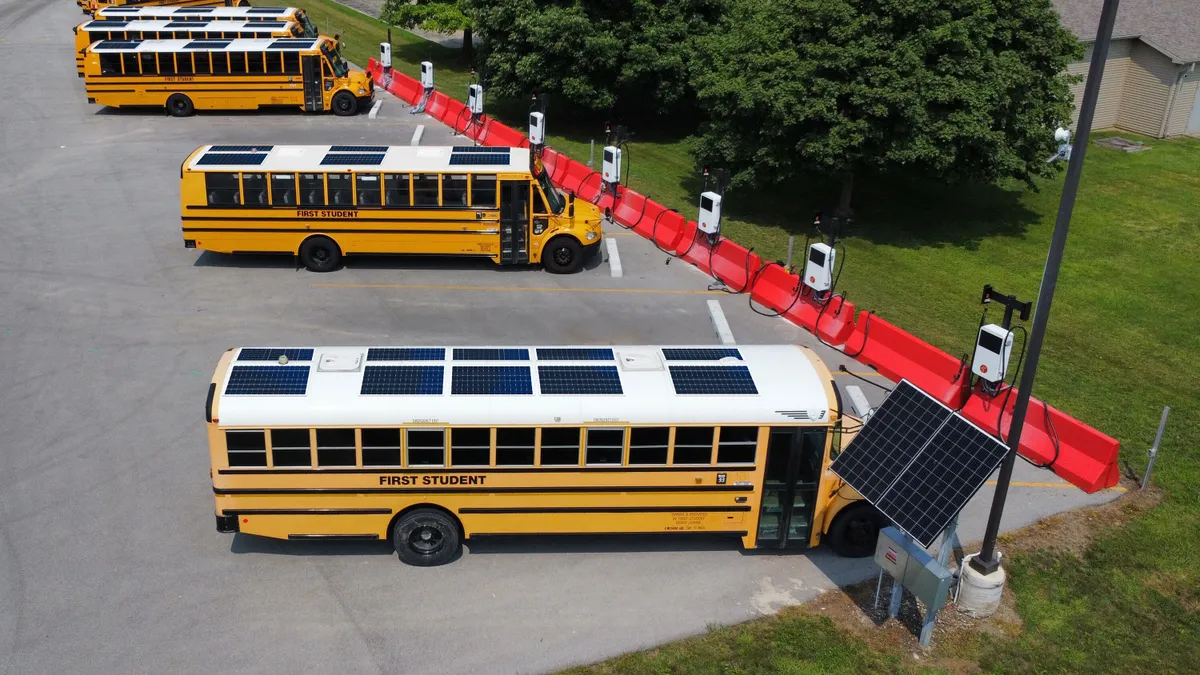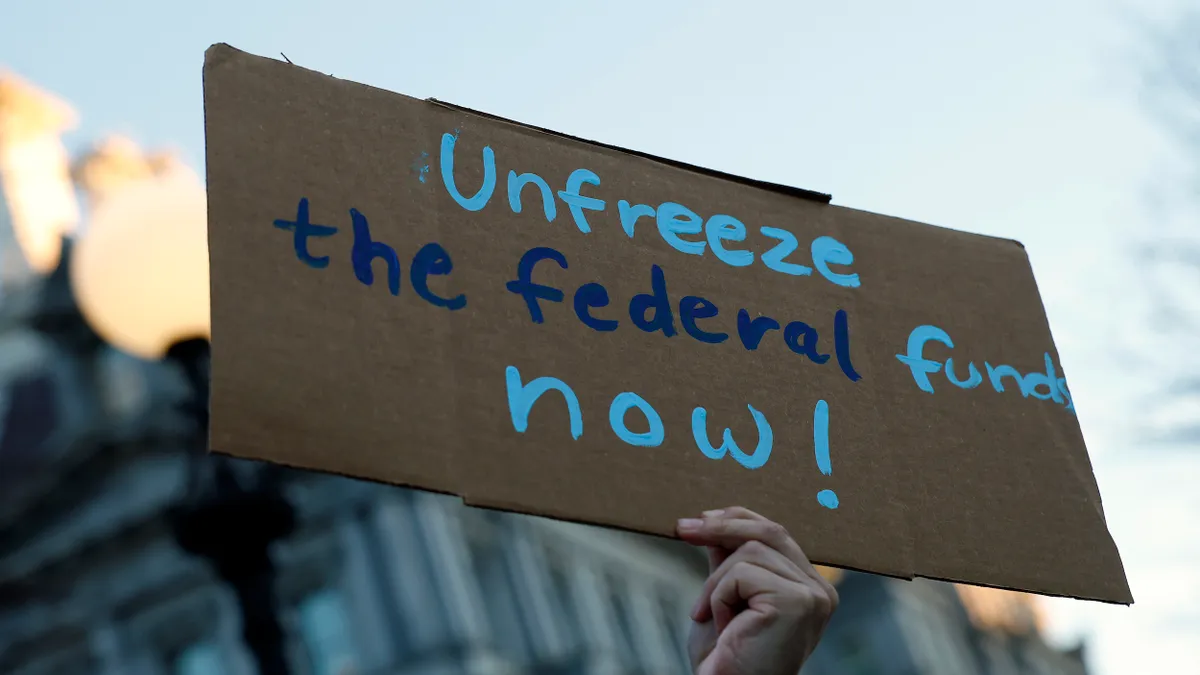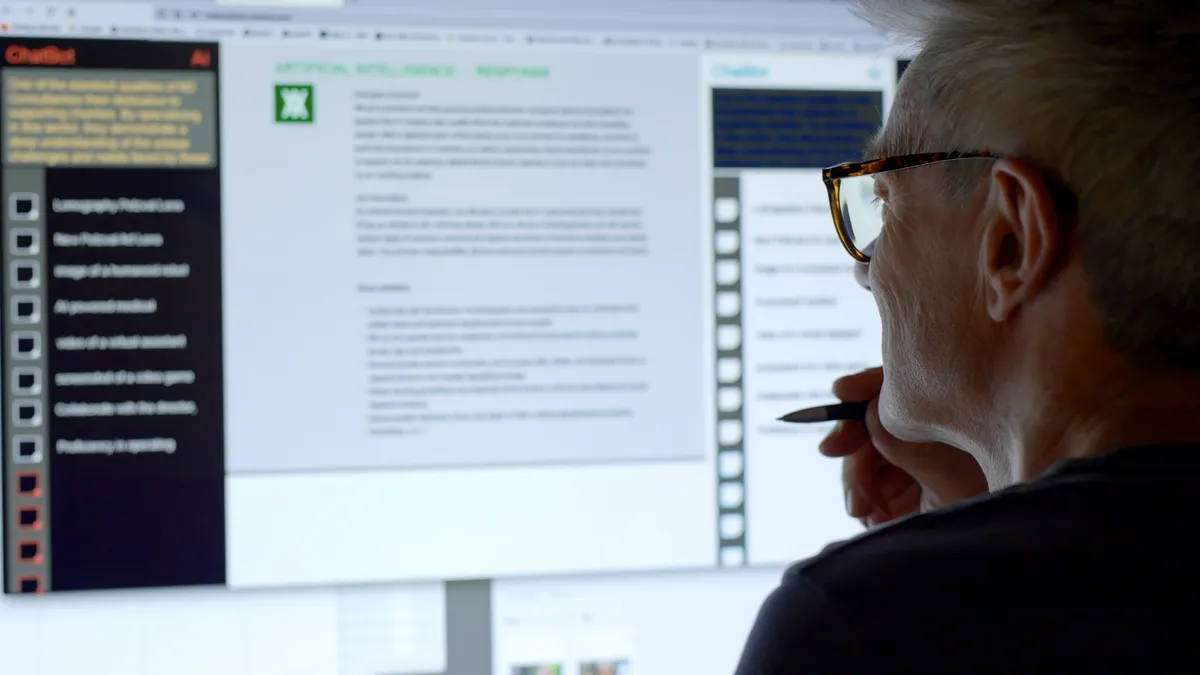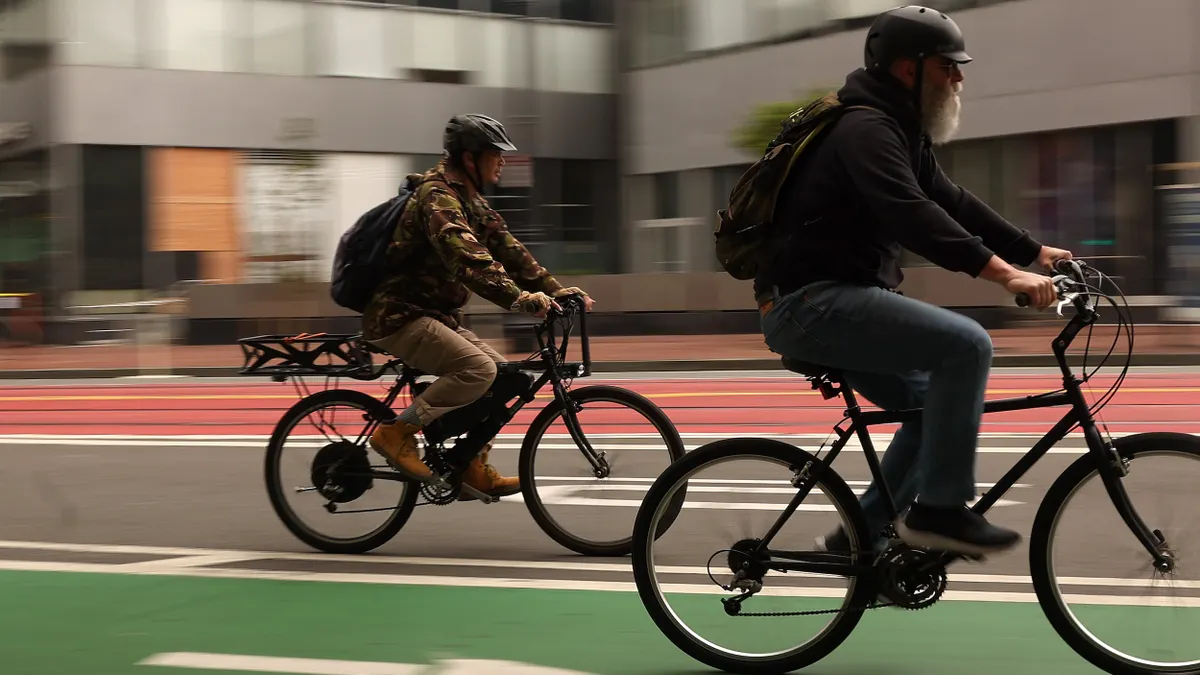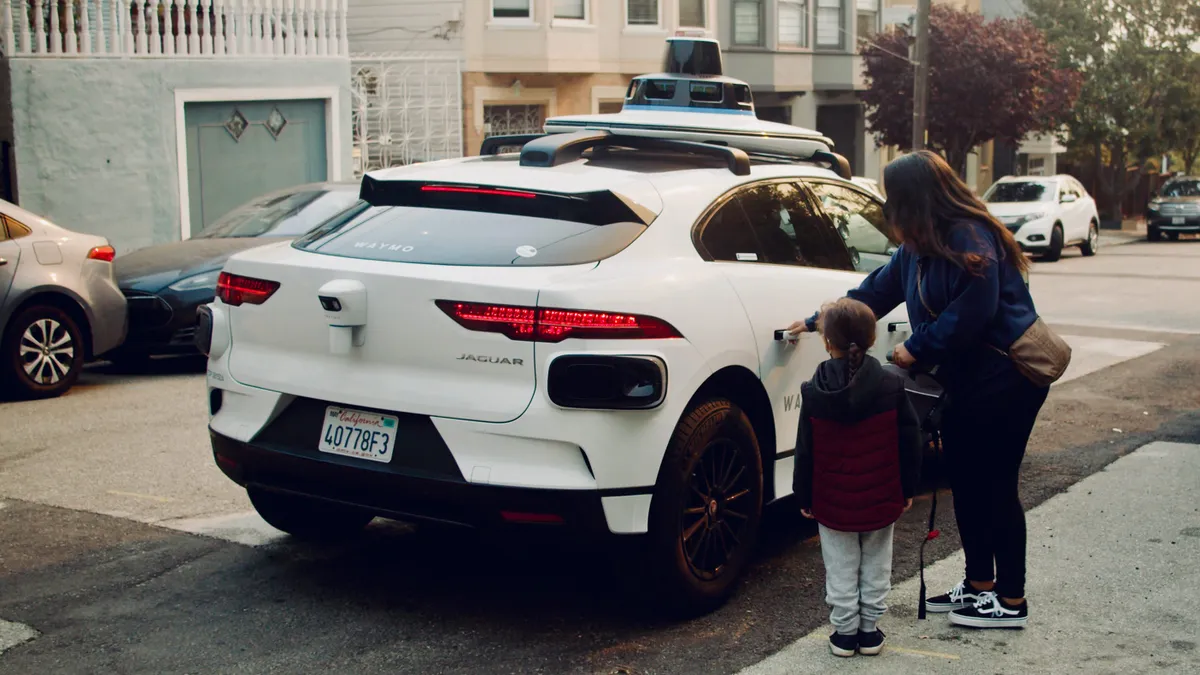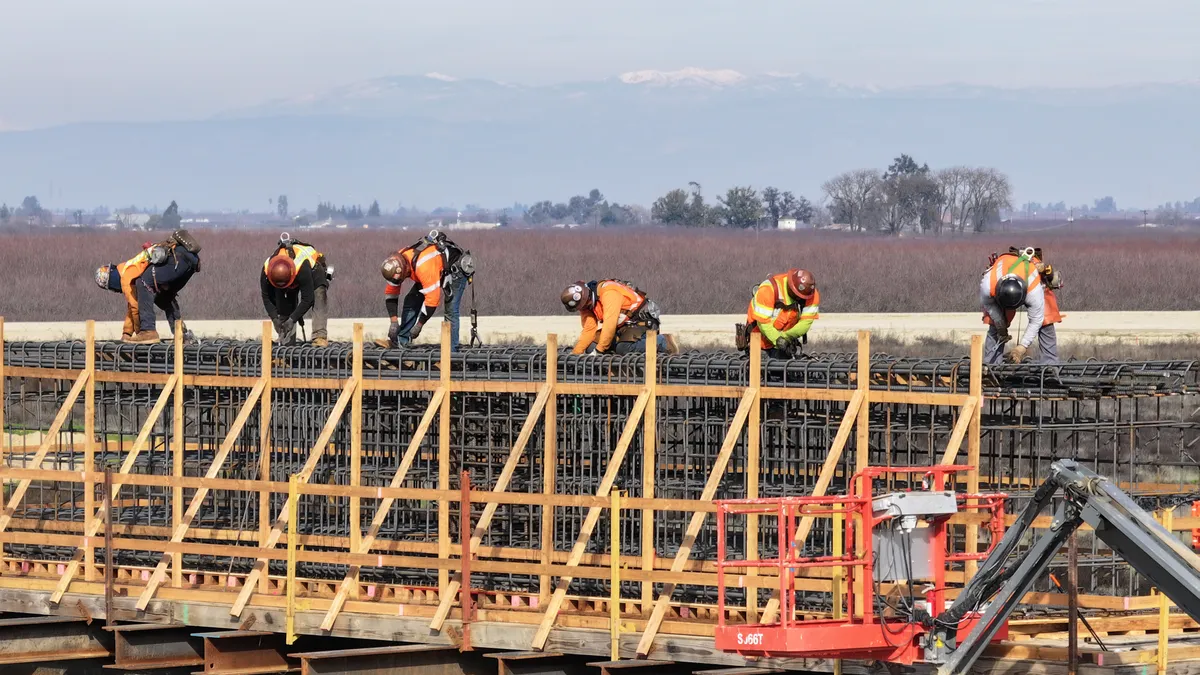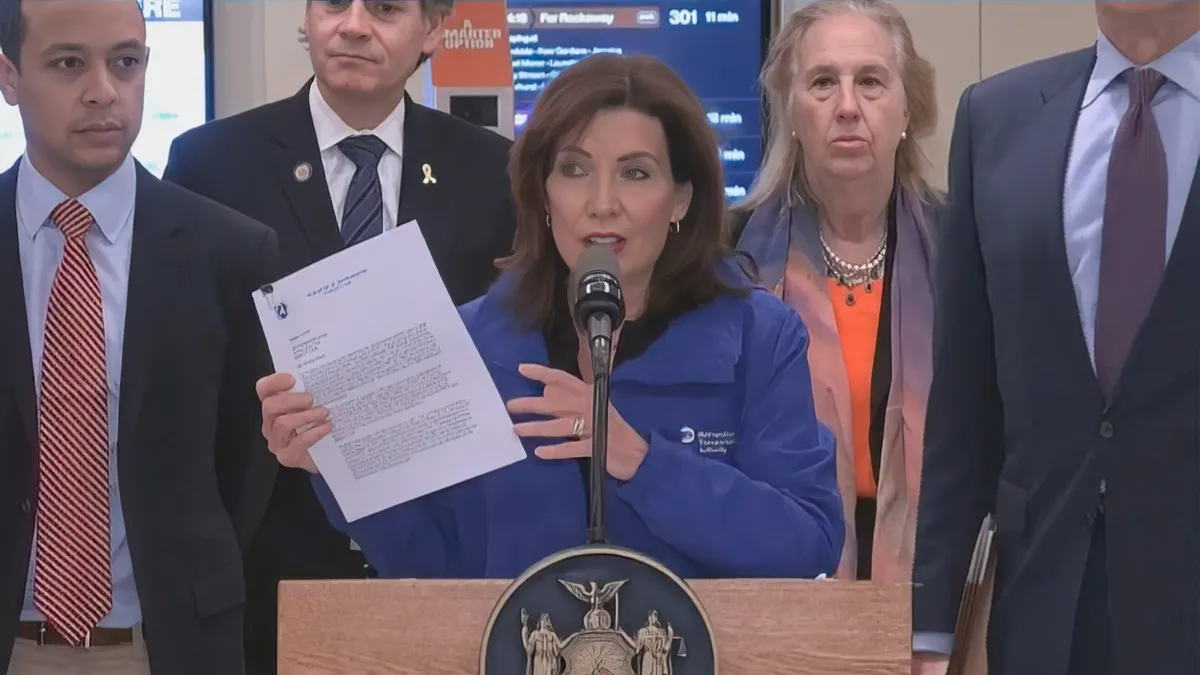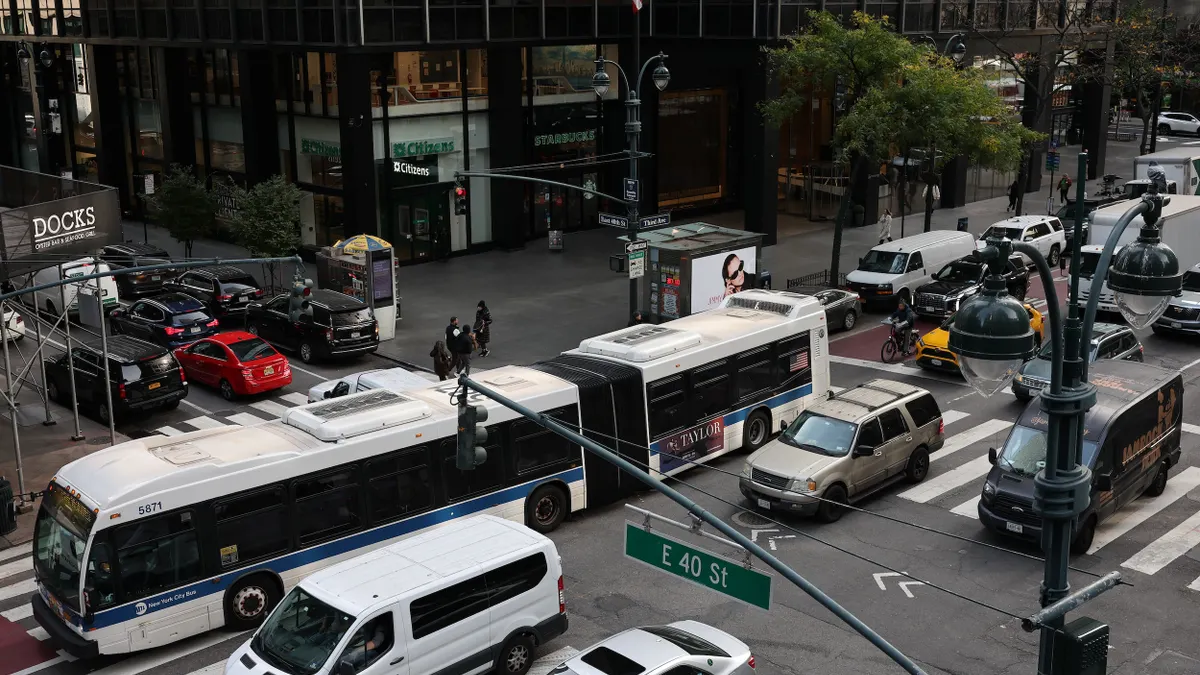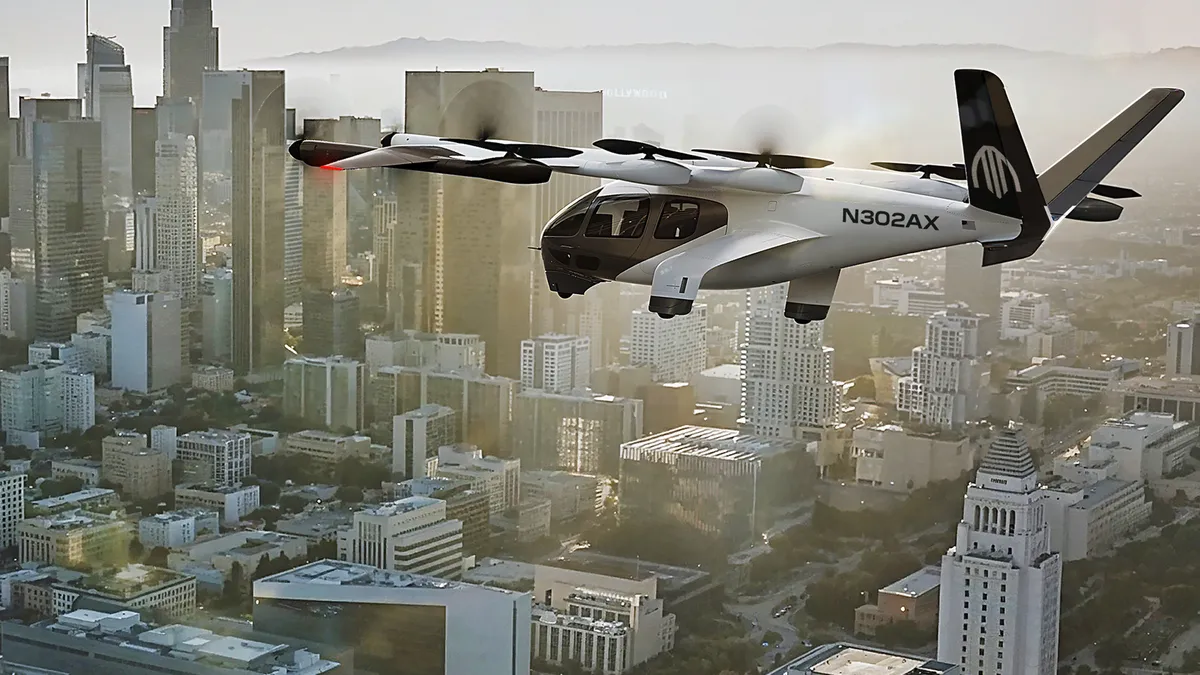The transportation industry is in the midst of extraordinary technological advancement. Fast Company magazine aims to capture a sense of the progress every year with its most innovative transportation companies list. Among this year’s companies are those using artificial intelligence to move autonomous vehicles, installing new technology for electric vehicle charging and deploying hydrogen energy on trains.
Smart Cities Dive spoke with local government agencies and other partners working with five of those companies to better understand their experiences. Other companies on the Fast Company list are Candela Technology, which makes electric hydrofoil ferries, one of which is planning to operate on Lake Tahoe; Applied Intuition and Waabi, both advancing autonomous driving technology; Zypp Electric, which offers electric scooters for last-mile delivery in India; and H55, which is building battery-electric passenger airplanes.
Solar-powered electric school buses hit the road in Brooklyn
Consolidated Edison Co., a utility company in New York, launched a $9 million partnership with First Student in October to boost the number of electric school buses in Brooklyn. The buses will use solar panels on their roofs as well as a solar array and battery at the depot for charging.
Four electric school buses were in operation as of last fall, and a total of 12 and their chargers are expected to be in operation this summer. First Student’s First Charge solar charging unit is expected to be running by summer 2026, said Roy Rada, a project manager with ConEdison.
Typically a charging depot might require that the asphalt of a parking lot be torn up to run electrical wiring underground. Lucia Game, a senior specialist at Con Edison, said the First Student First Charge design allows more of the wiring to be aboveground, which brings down the installation cost.
The technology adds greater flexibility in worst-case scenarios, too, Game said. With First Charge, the chargers could be moved in the event of a natural disaster, like flooding.
“How do you really future-proof this major investment in infrastructure?” Game said. “This seemed like a very interesting and innovative approach.”
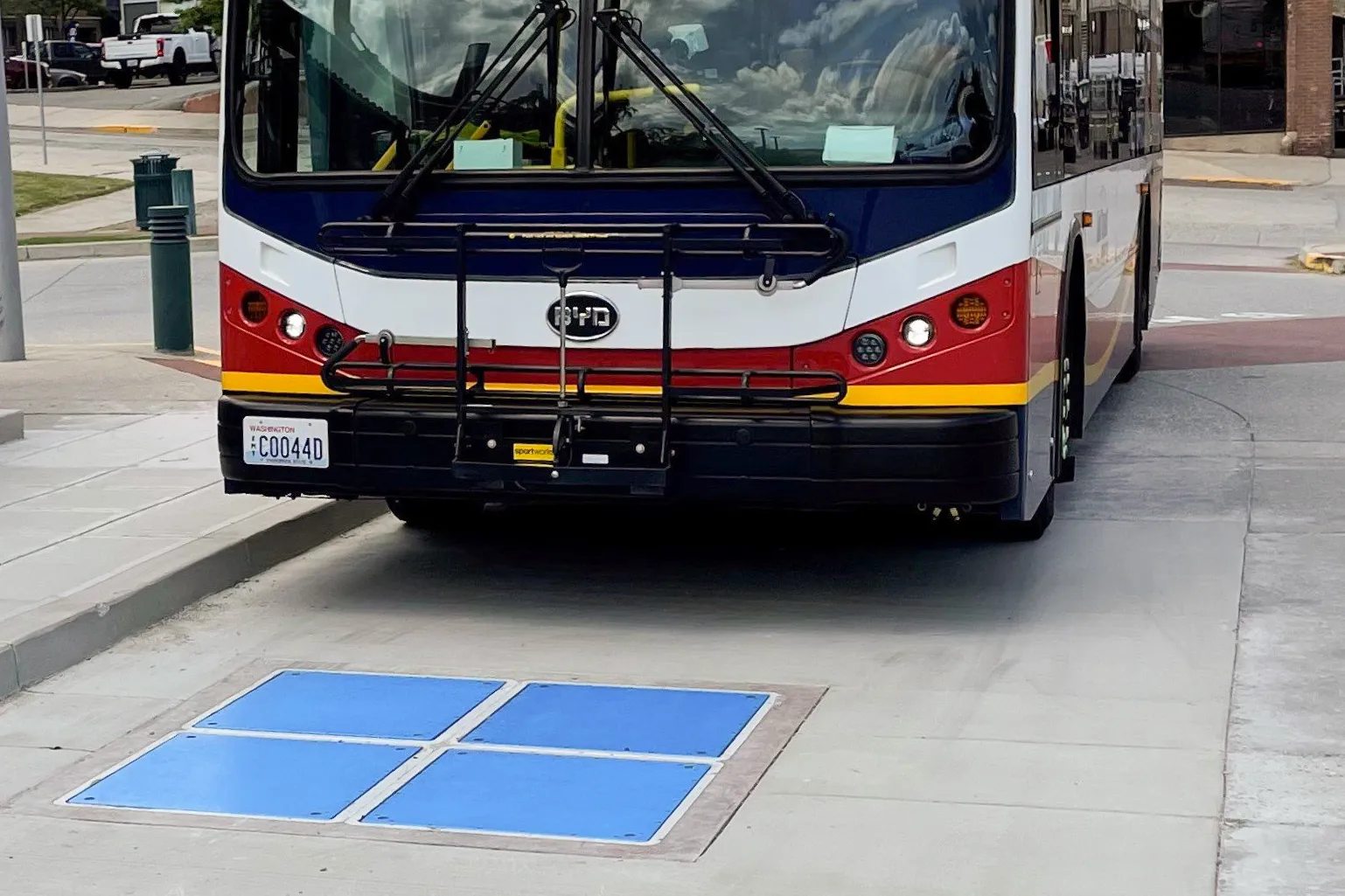
Wireless transit bus charging in Seattle and Everett, Washington
In 2026, the Seattle area will have a public transit feature more commonly associated with London: double decker buses.
The electric double decker buses, made by Alexander Dennis, will employ a unique charging set-up: InductEV will bury charging pads below the roadway, allowing the buses to charge on their routes, according to a company news release.
“Induction layover charging will extend range and improve reliability of our [battery-electric bus] operations while reducing the footprint required for charging infrastructure,” said Harry Bendon, Sound Transit public information officer, in an email.
Sound Transit is the seventh Washington-based public transit agency to partner with InductEV to deploy its wireless charging technology, according to the company’s news release. Seattle is the first North American location to use the double-decker buses.
Everett Transit, also in Washington, added charging pads to its main operations base in May. On-route charging stations at two transit terminals began to come online in March, Everett Transit spokesperson Matt Coomes said in an email.
He noted some challenges: Optimal charging requires tight alignment between the vehicles and the charging pads, for example. Everett Transit painted guidelines to help bus operators with the parking process for better alignment. Coomes added that electric buses can’t yet match the service of a diesel, hybrid or compressed natural gas bus.
“There is no single silver-bullet solution that will close this performance gap, but technologies like those InductEV provides can help extend the range of these buses,” he said.
App-based microtransit in the Minneapolis area
In 2019, SouthWest Transit, a public transit agency in the Minneapolis area, was in search of a partner to provide the technological base for its microtransit service SW Prime. The service had become labor-intensive.
“We were trying to kind of do it all ourselves,” SouthWest Transit CEO Erik Hansen said.
“A lot of the dispatching we were doing manually, so people would call in, and it became kind of like a dial-and-ride at that point.”
In search of a system that operates more like ride-sharing providers Lyft and Uber, the transit agency began using Spare in 2019. The Vancouver-based company also partners with several other U.S. public transit agencies, including Dallas Area Rapid Transit and GoDurham Access, using artificial intelligence to optimize paratransit and microtransit operations.
In the case of SouthWest Transit, the app helps drivers know in advance if a passenger will require wheelchair assistance. Now, SouthWest Transit and Spare are looking to take their partnership a step further: This month, SouthWest Transit expects to launch five autonomous Toyota Siennas, powered by May Mobility, as a part of its SW Prime service. Hansen said the service will have several benefits for riders.
“I love that opportunity with technologies when they work together, and we can provide a better service for our customers at a lower cost,” he said.
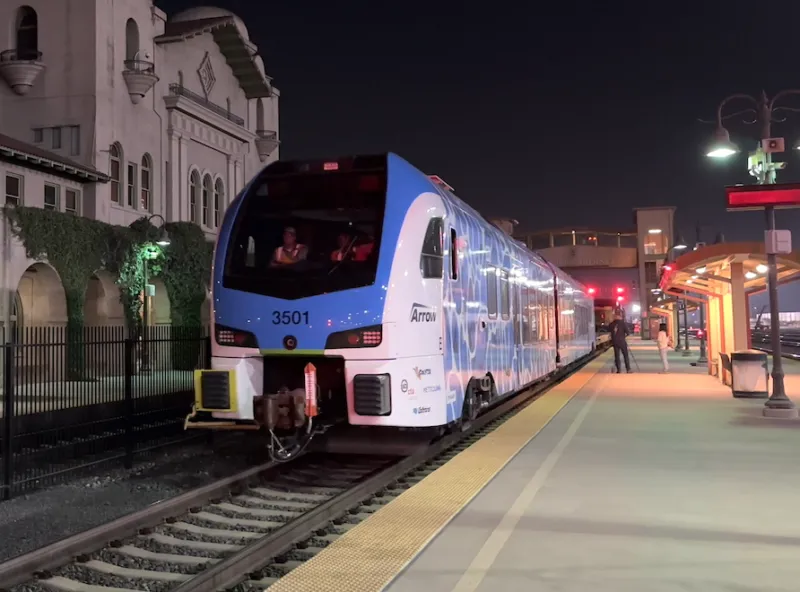
Hydrogen trains hit the rails in California
In 2024, the Swiss company Stadler Rail set a Guinness World Record for the longest distance traveled (1,741.7 miles) by a pilot hydrogen fuel cell electric multiple unit passenger train without refueling or recharging, according to a news release from the company.
While that milestone took place at a U.S. Department of Transportation facility in Pueblo, Colorado, the train, known as the FLIRT H2, then headed to San Bernardino County, California.
The San Bernardino County Transportation Authority is part of the Southern California Regional Rail Authority, an agency composed of five counties in Southern California, which operates the commuter rail service Metrolink.
The SBCTA funds a 10-mile stretch of the commuter rail from San Bernardino to nearby Redlands. During the environmental review process for that extension project in the 2010s, residents asked the authority to consider cleaner options for operating the train line, SBCTA’s deputy executive director, Carrie Schindler, said.
“We have these beautiful San Gabriel and San Bernardino mountains,” she said. “But we're in what's called the air quality nonattainment area, because the onshore winds push all the smog and [it backs] up against these mountains.”
The SBCTA originally chose a diesel version of FLIRT, but it began to think about how it could go even further. Electrifying the San Bernandino line that connects Los Angeles to Redlands would be costly, at $12 billion, Schindler said, and battery charging for trains is too time-consuming. Instead, the SBCTA decided to pursue a hydrogen-powered option. The FLIRT H2 train has a power pack in the middle that converts hydrogen to electricity.
The SBCTA is at the end of the testing phase and expects that the trains will begin operating between San Bernardino and Redlands sometime between May and August, Schindler said. When it comes online, it will be the first hydrogen-powered passenger train in the U.S. that has been approved by the Federal Railroad Administration, according to a Stadler Rail news release.
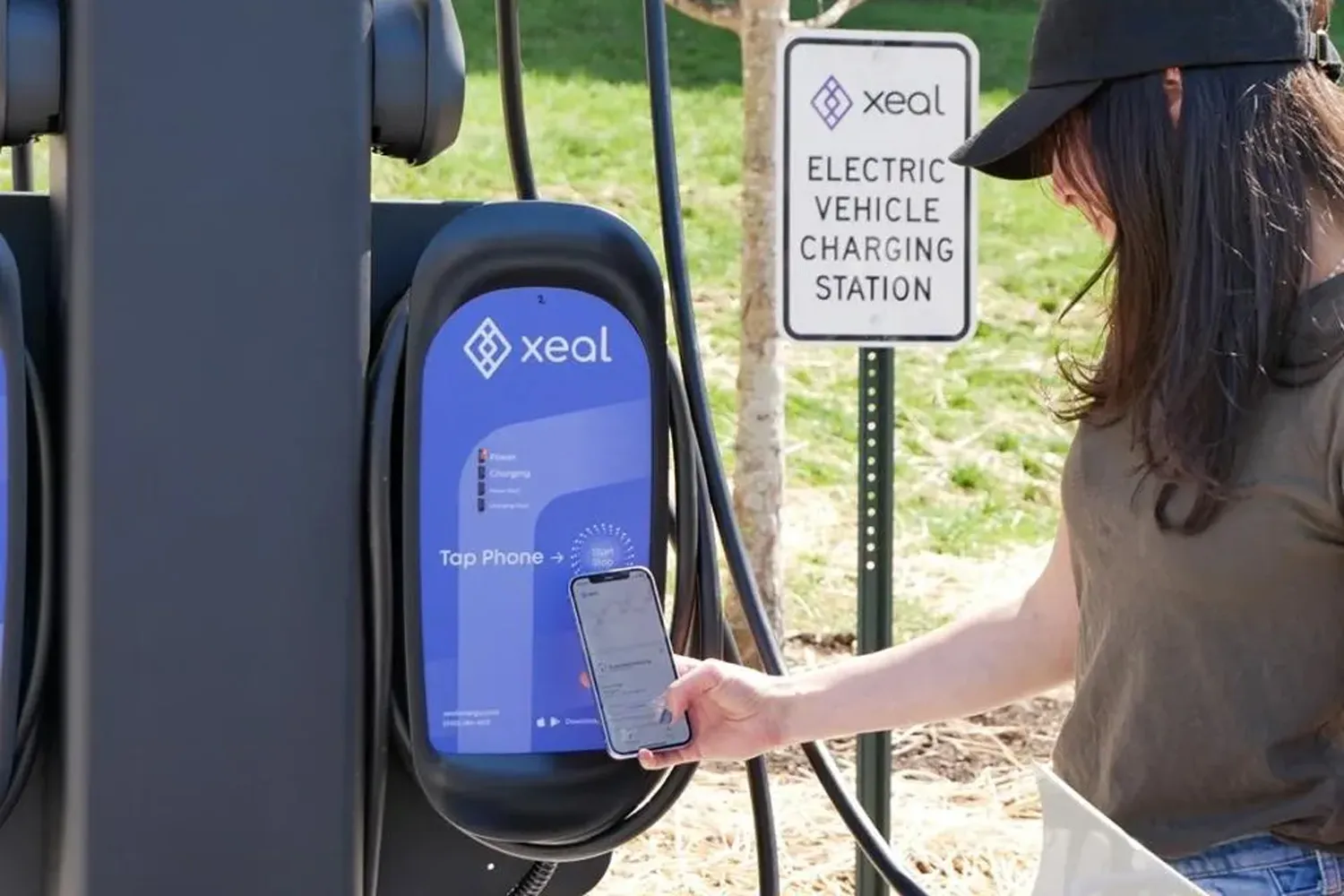
Expanding EV charging at communal housing and office properties in four states
The proliferation of electric vehicles throughout the country has spurred technological advancement in EV charging.
Xeal’s technology allows drivers to use public EV chargers when they don’t have the internet access most public chargers require.
In 2022, the company announced a partnership with real estate firm Harrison Street to install more than 300 electric chargers at stations across California, Massachusetts, Texas and Virginia. Those chargers were put in place at senior housing, student housing and medical office properties. Representatives from Xeal were unavailable to comment on the partnership.
One of the projects involving Harrison Street and Xeal led to the installation of over 80 EV chargers at Osborn Triangle, a life sciences campus in Cambridge, Massachusetts.
“By equipping the campus with reliable EV chargers, we’re helping our tenants reach sustainability goals while making it easier to adopt sustainable transportation,” Robert Brierley, senior vice president, director of property management at Bulfinch, a commercial real estate company that manages the property, said in a news release.
Xeal has continued to expand its operations, adding 500 charging stations to college campuses in 2024, according to the Fast Company article.


